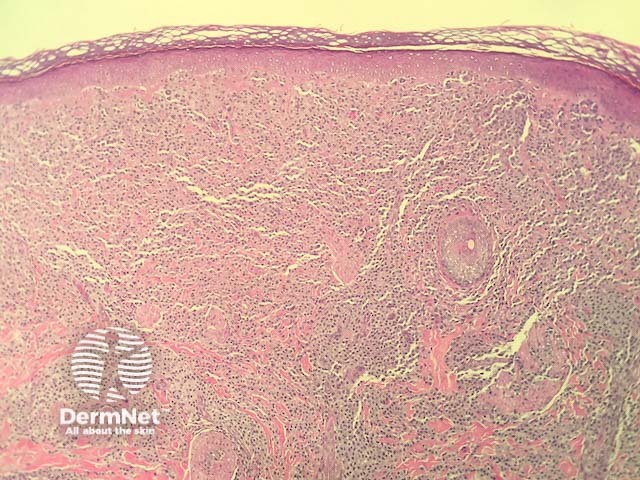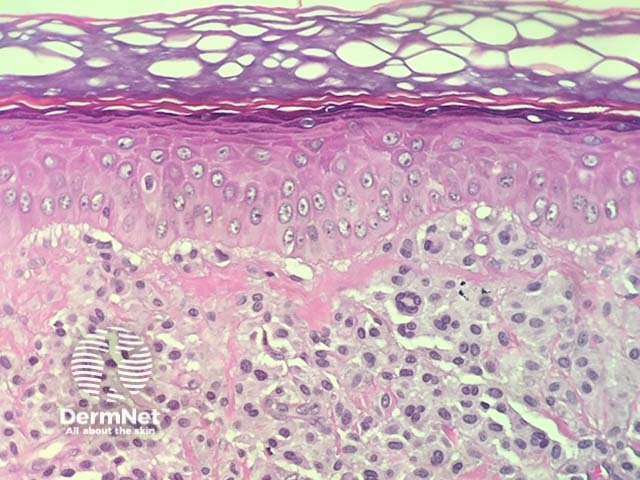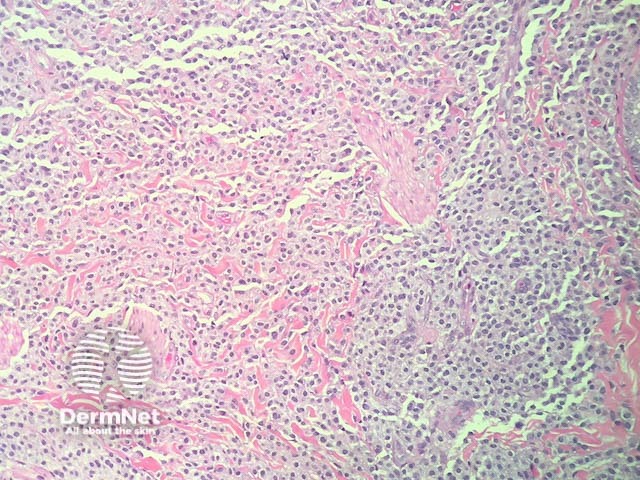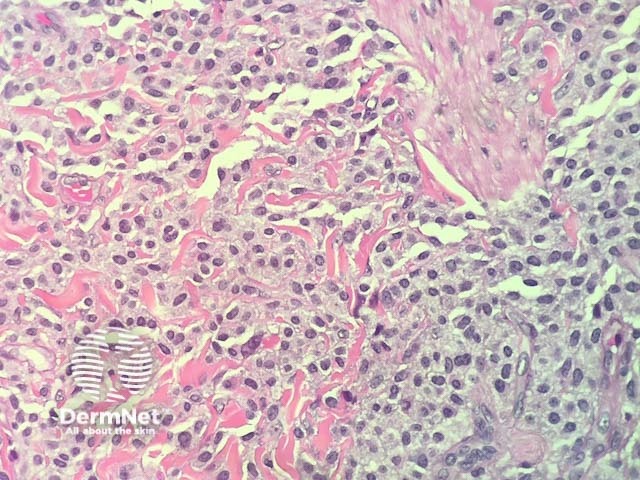Main menu
Common skin conditions

NEWS
Join DermNet PRO
Read more
Quick links
Maculopapular cutaneous mastocytosis pathology — extra information
Maculopapular cutaneous mastocytosis pathology
Author: Adjunct A/Prof Patrick Emanuel, Dermatopathologist, Clínica Ricardo Palma, Lima, Peru. DermNet Editor in Chief: Adjunct A/Prof Amanda Oakley. October 2018.
Introduction Histology Special studies Differential diagnoses
Introduction
Maculopapular cutaneous mastocytosis was previously called urticaria pigmentosa. It is the most common form of mastocytosis in adults and children.
Maculopapular mastocytosis in adults is unlikely to resolve with time. It may rarely lead to systemic involvement, where the mastocytosis spreads to more than one tissue.
Histology of maculopapular cutaneous mastocytosis
In maculopapular cutaneous mastocytosis, the histopathology shows an accumulation of mast cells in the dermis (figures 1-4). Mast cells are round or spindle shaped with abundant eosinophilic cytoplasm which contain minute granules, distinct cytoplasmic boundaries, and large pale nuclei (best seen in figures 2-4). Often there are accompanying other inflammatory cells including histiocytes, eosinophils and lymphocytes. There may be oedema of the dermis, particularly if the lesion has been traumatised.

Figure 1

Figure 2

Figure 3

Figure 4
Special studies for maculopapular cutaneous mastocytosis
Giemsa, toluidine blue , tryptase, and Leder special stains can help highlight the mast cells. Immunohistochemistry with CD117 is very helpful in difficult cases, as this nicely highlights the mast cells.
Differential diagnosis for maculopapular cutaneous mastocytosis
Other diagnoses to be considered include:
- Langerhans cell histiocytosis — this disease can have a similar morphology and clinical presentation. In Langerhans cell histiocytosis immunohistochemistry will demonstrate the cells are positive with CD1a instead of CD117
- Urticaria — the infiltrate may include some mast cells but typically there are many more neutrophils, eosinophils and spare infiltrates around vessels.
References
-
Kelly JV. Generalized, well-dispersed rash · wheal development after tactile irritation · normal vital signs · Dx? J Fam Pract. 2015 Oct;64(10):645–7. PubMed PMID: 26551471.
On DermNet
